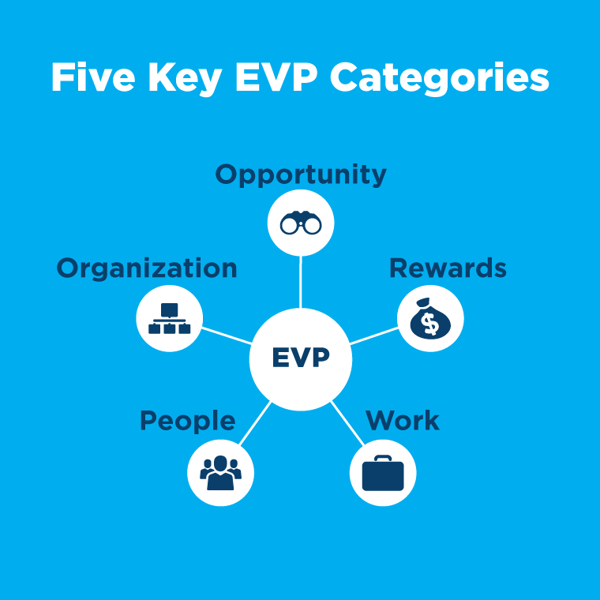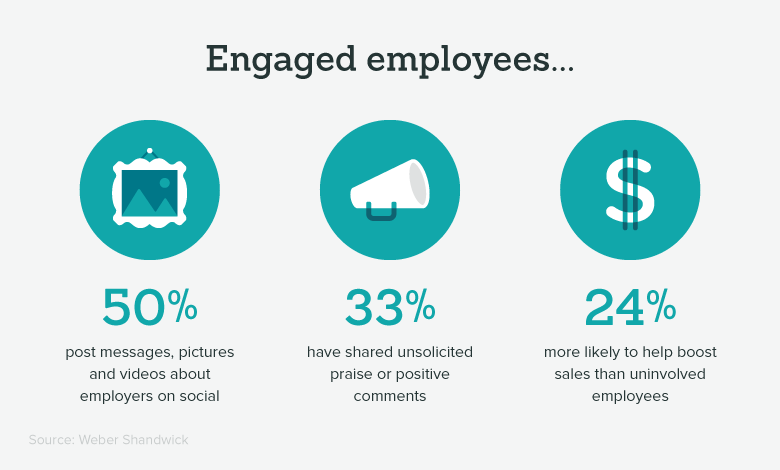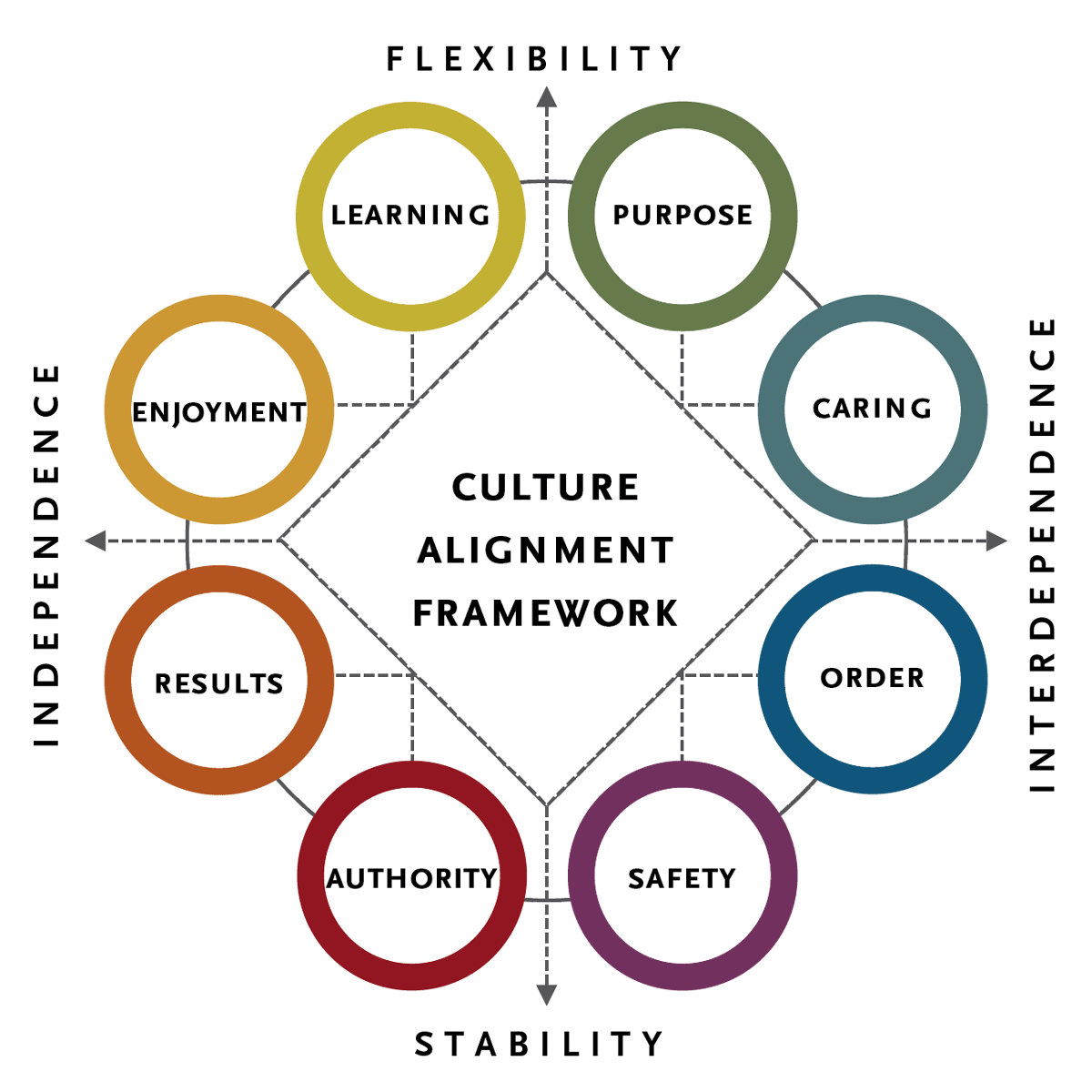An employee value proposition can be defined as how employees perceive the value they gain by working in an organization. Essentially, this is the branding that is built around both internal and external feedback. For employers, an EVP is a crucial way to make sure the right candidates are targeted and interested in the company.

According to Gartner, employee value propositions can be broken down into 5 sections:

- Rewards: includes salary, benefits, soft perks, time off, etc.
- Work: includes job-interest alignment and work-life balance
- Organization: includes the mission statement, product or service, social responsibility
- Opportunity: includes career growth, continued education, personal development
- People: takes into consideration the full spectrum of employees, from executives down
It is important to note that employee value propositions should be unique based on the organization. What works for one organization will not necessarily work for another. Despite the need for unique solutions, there are certain things companies can do to help build a successful EVP:
4 Ways to Create a Compelling Employee Value Proposition
1. Offer Career Development and New Opportunities
By placing trust in employees and offering them room for advancement, organizations empower employees to challenge themselves and be rewarded for their efforts. It is estimated that 87% of employees value learning and personal development the most. This can include new trainings, stipends for education, and or opportunities to try new roles or locations.
Another important aspect is flexibility. Does your organization offer employees to work from home or explore unconventional arrangements? Workers who have more access to flexible work arrangements report greater job satisfaction and are more likely to be committed to their employers and therefore stay at their current company.
2. Focus on Employee Engagement
It is estimated that 87% of engaged employees trust their managers and that companies with high EVP balance teamwork and benefits. This is unique from the first point which is more focused on individual advancement. When individuals are happy, they help create a more cohesive team that value the same things.
These same engaged individuals are also more likely to recommend the organization to family and friends. A survey by CEB found that there is a 24-47% increase in employees recommending a company when a company’s EVP is successful.

3. Design a Generous Rewards Package
Rewards in this sense do not only refer to wages. Rewards can come in the form of benefits, vacation, bonuses, and other soft perks. When mixed with other strategies, an EVP will create a perfect balance that challenges, motivates, and rewards good employees. This has been proven to help drive a stronger bottom-line. 41% of customers are loyal because of good employee attitude and 70% of customer brand perception is determined by experiences with people.
What these stats imply is that happy employees will act as brand ambassadors in their daily lives and help to naturally attract similar minded candidates and drive brand loyalty across their social circles. When compounded across an organization, this can be extremely valuable.
4. Align Organizational Culture
A good EVP should align with an organization’s vision, values, mission, and social corporate responsibility. Culture goes hand in hand with EVP and branding to create a powerful interlinking force that can shape an organization. A Columbia University study found that the likelihood of job turnover at an organization with high company culture is a mere 13.9 percent, whereas the probability of job turnover in low company cultures is 48.4 percent.

Source: Spencer Stuart
This same study found that more than 90% of respondents said that culture was important and 92% felt that improving their company’s culture would improve the value of the company. Sadly, only 15% of the respondents said their company culture was up to par.
On the CSR front, Deloitte’s global millennial survey found that 35% of millennials that were offered the chance to donate to charitable causes at work were likely to stay at that organization for more than five years. All of these factors should be explored when researching and designing an EVP.
Conclusion
An employee value proposition needs to be carefully researched and tailored for each organization. The strategies that are used should be molded to both the ideal hiring targets desired and the feedback of an organization’s staff. By creating an effective EVP, an organization will benefit from the increased engagement, profitability, and happiness of an aligned workforce. In return, this workforce will act as brand ambassadors and help attract the right people and image for the organization.






